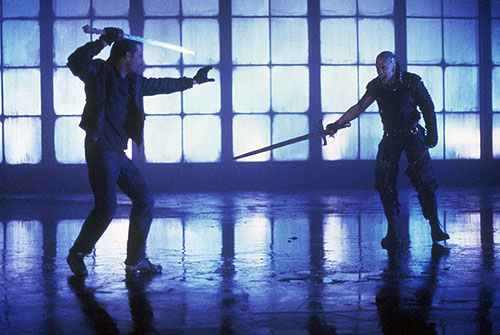Svrtnsse submitted a new blog post:
3 Tips for Writing Action Scenes
by Nils Ödlund

Lights, camera, action.
It's time. You've written your novel almost to the end. You've ramped up the tension and excitement, and the fate of the entire world is at stake. The audience is waiting with bated breath for what's to come. All that remains is to write the final showdown where your heroes vanquish the great evil and save the day.
It's going to be awesome.
Only, as you write it, it's not. It's not awesome. In fact, it's a bit dull, and you're not enjoying it.
You've got all these powerful heroes with their amazing powers. You've got evocative similes to describe your special effects, and you've got a battery of snappy one-liners for the heroes to fire off as they foil the carefully laid out plans of the villain.
But, it's still boring...
At least, that's what it's like for me.
The first draft of any action scene I write is just plain dull. It's not until the second or third version that it starts to get interesting.
There's a saying about how the first draft is just about telling yourself the story. Remember this and keep it at the top of your mind, both for action and for writing in general.
The first draft of an action scene is little more than a chronological list of the events taking place at the time. It's necessary to write it though, or you won't have anything to spice up for the second draft. It's so you know what happens.
Done? You've got your first draft? Cool....
Continue reading the Original Blog Post.
3 Tips for Writing Action Scenes
by Nils Ödlund

Lights, camera, action.
It's time. You've written your novel almost to the end. You've ramped up the tension and excitement, and the fate of the entire world is at stake. The audience is waiting with bated breath for what's to come. All that remains is to write the final showdown where your heroes vanquish the great evil and save the day.
It's going to be awesome.
Only, as you write it, it's not. It's not awesome. In fact, it's a bit dull, and you're not enjoying it.
You've got all these powerful heroes with their amazing powers. You've got evocative similes to describe your special effects, and you've got a battery of snappy one-liners for the heroes to fire off as they foil the carefully laid out plans of the villain.
But, it's still boring...
At least, that's what it's like for me.
The first draft of any action scene I write is just plain dull. It's not until the second or third version that it starts to get interesting.
There's a saying about how the first draft is just about telling yourself the story. Remember this and keep it at the top of your mind, both for action and for writing in general.
The first draft of an action scene is little more than a chronological list of the events taking place at the time. It's necessary to write it though, or you won't have anything to spice up for the second draft. It's so you know what happens.
Done? You've got your first draft? Cool....
Continue reading the Original Blog Post.

 Sage
Sage